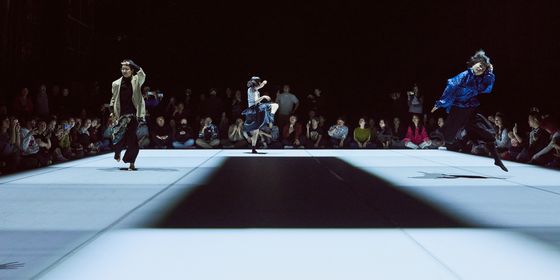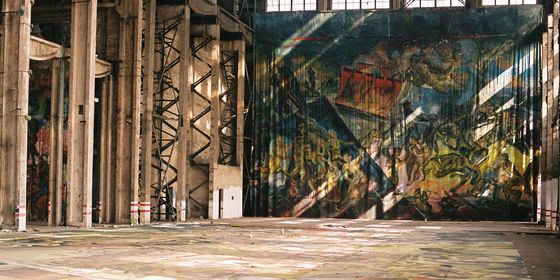Mechanic-turned-artist Fung Ming Chip talks about his journey to art and his invention of new calligraphic scripts
A former factory worker and car mechanic from Hong Kong, world-renowned artist Fung Ming Chip (冯明秋) is credited with creating over 100 new Chinese calligraphic scripts. Fresh off his solo exhibition in New York City’s QM Fine Art gallery, the experimental calligrapher sits down with TWOC to discuss his unusual career trajectory and how it inspires his art.
How did you become an artist?
I’m a self-taught artist from a working class background. My family moved to Hong Kong from Enping, Guangdong province, when I was 3 years old. After primary school, I went straight to working in a factory. When I was in my 20s, I caught tuberculosis and was unable to work for a long time. A friend of mine shared his seal carving hobby with me. I thought that seal carving was a good way to kill time, and began to practice calligraphy so that I could better carve Chinese characters.
When I moved to New York City in 1977 for work, I was extremely inspired by the modern art movement. Ever since I was a little boy, I felt in my heart that I was an artist; but I didn’t know how to become one. So, I decided to focus my artistic process on what I already knew and understood: seal carving. Eventually, the stone seals became wood seals and then I jumped to paper, experimenting with calligraphy.

Fung Ming Chip, “Music Script,” 2015
What makes your work so different from traditional calligraphy?
I sometimes view myself more as a scientist, rather than as a traditional artist or a calligrapher. I go about my days researching different possibilities and ways that calligraphy can be used and modified. I like to think about the ways that we use our hands to communicate ideas and emotions from a traditional and historical perspective. I created 124 new types of calligraphic scripts, after which I stopped counting. When people attend my solo exhibitions, a lot of them are surprised because there are so many different styles and scripts that they automatically assume it’s a group show.
What is the reaction of the public to your works?
There are two types of audiences: the ones who understand and can read Chinese and the ones who don’t. For the first group, they immediately try to read what the writing says and then they pay attention to the art form. For the second group, they allow the art form to move them first. Although I do have some works that are based on ancient texts, 99 percent of my artwork is based on my own poems. My poems are not written in the classical style; they are about my own life experiences and focus on very ordinary things—from a long-distance phone call and the feelings of loneliness that it creates, to the fear and breathlessness of going to the hospital after an asthma attack.
Which scripts resonate the most with your audiences?
My “Heart Sutra,” which is now in the permanent collection of the Metropolitan Museum of Art in New York City, has been the best received among art connoisseurs. I think this is because while it looks very traditional, you can tell that it is very innovative in its creation process. In this transparent sutra [Editor’s note: Fung’s transparent script resembles shadows on a paper, since it is first written in water and then overlaid with ink], you can really feel the depth of the paper. I think that the general public prefers my “Music Script” because in many ways, it is easier to understand. It resembles traditional calligraphy in how I use the lines, but changing the spatial aspects allows it to resemble music notation.
Where do you find your inspiration?
I just follow the feeling; developing new styles of scripts is a truly random process. It is not systematic at all. Because calligraphy encompasses so many fields, inspiration can come from something as simple as raindrops on the windshield of a car or a dream that I had the night before. Music and opera have a strong power over me. There have been a couple of times that I have rushed back to the studio after attending a concert because I was inspired to try out something new. I developed my “One Stroke” script after listening to a German language opera in London. I didn’t understand any of the words, but I felt the meaning very deeply.
What has been the most fulfilling aspect of your career?
Over the years, I have had so many exhibitions all over the world. It has been extremely fulfilling for me to be exposed to so many different cultures and countries; to see in person works by artists that I love. I still view myself as a working class person, so it has been interesting to engage with the art world. I still remember my first formal dinner—there were so many knives and forks that I didn’t know what to do with all of them! My travels have allowed me to see many different levels of the human race, from both a geographic and socio-economic perspective. These experiences have really opened my eyes.
Cover image: Fung Ming Chip, “Process of Phenomena,” 1993
Gallery: Flipping the Script is a story from our issue, “Grape Expectations.” To read the entire issue, become a subscriber and receive the full magazine.












